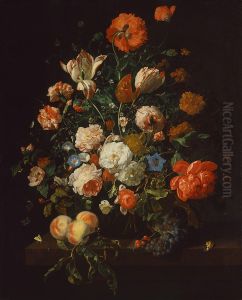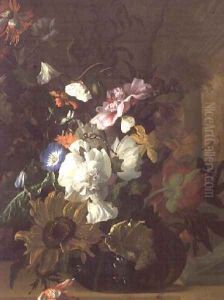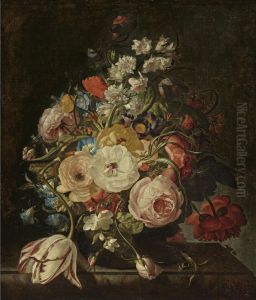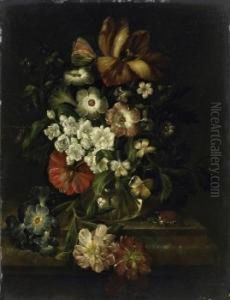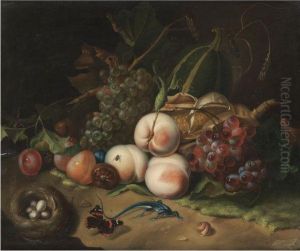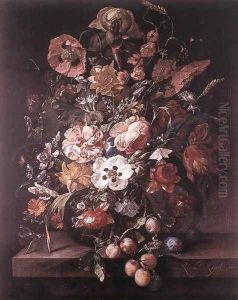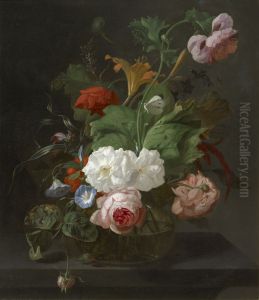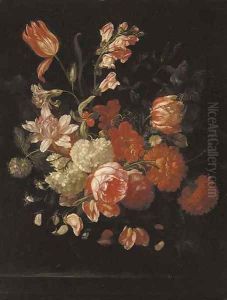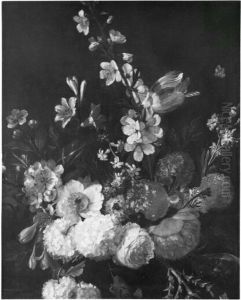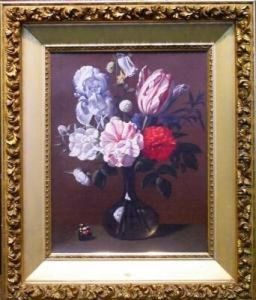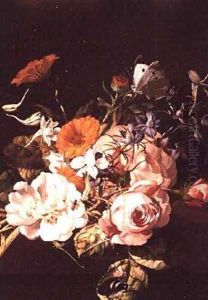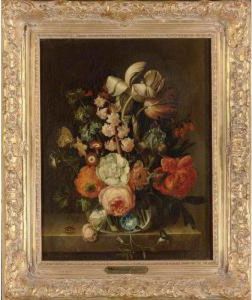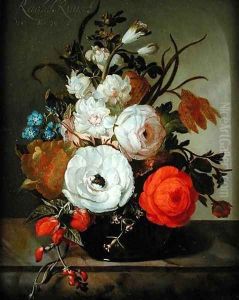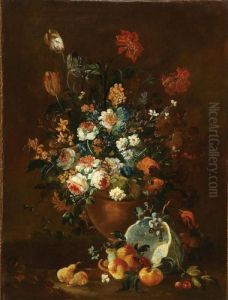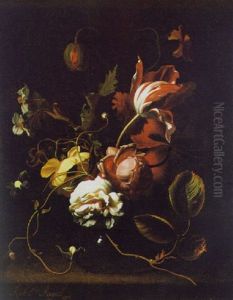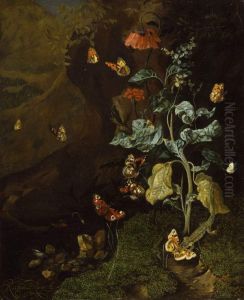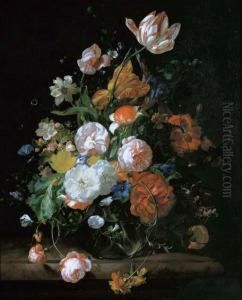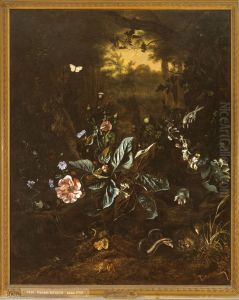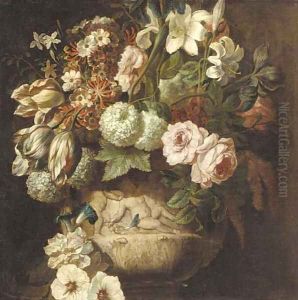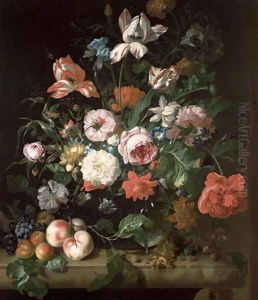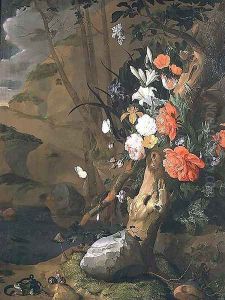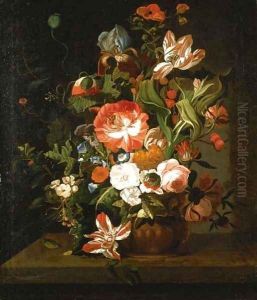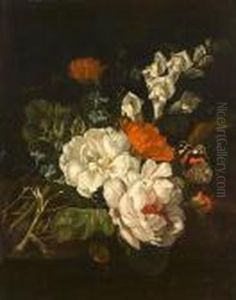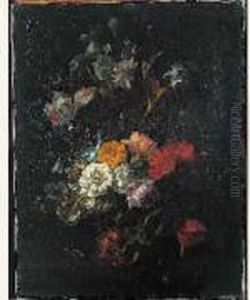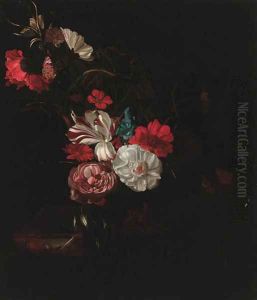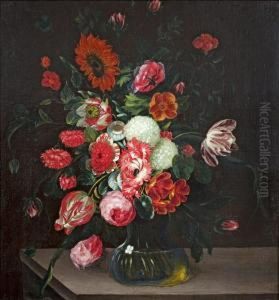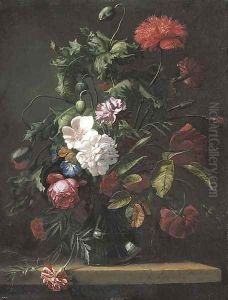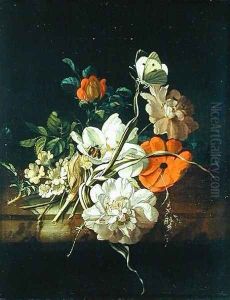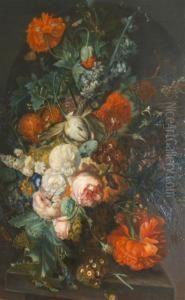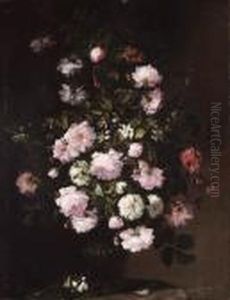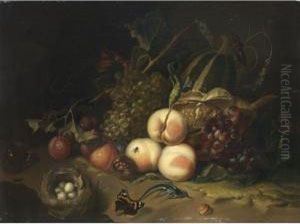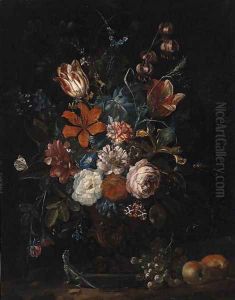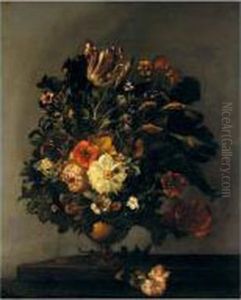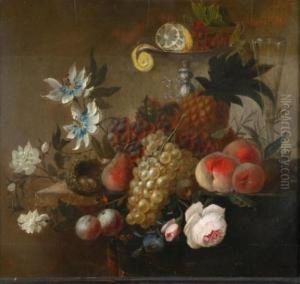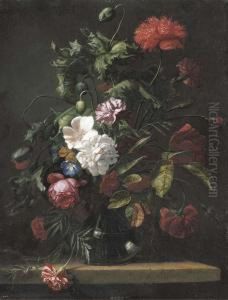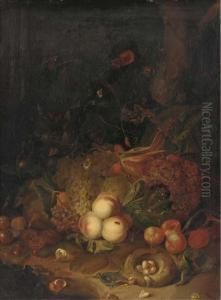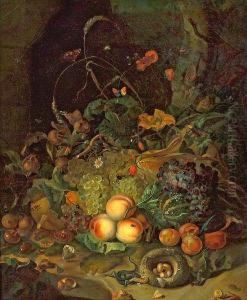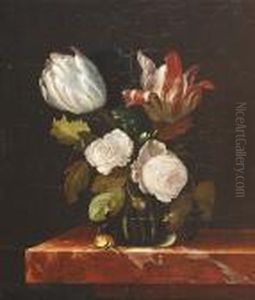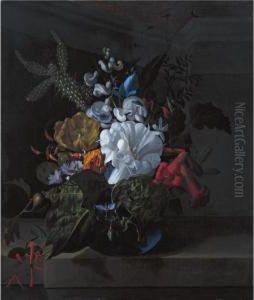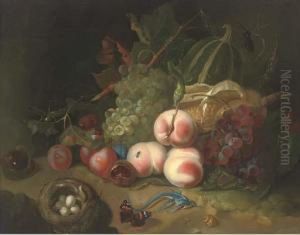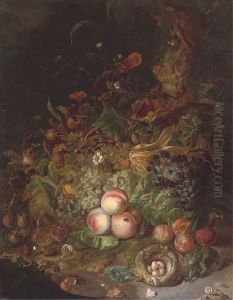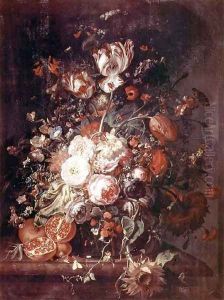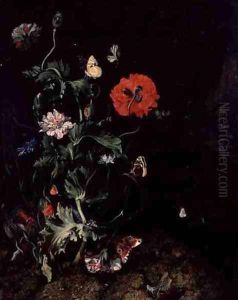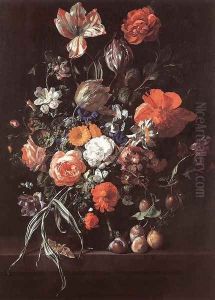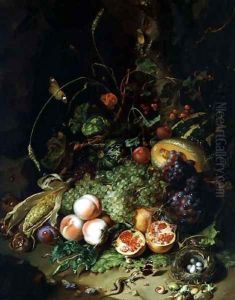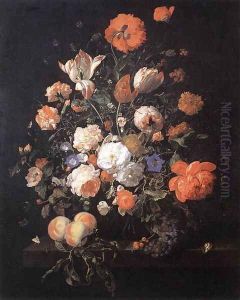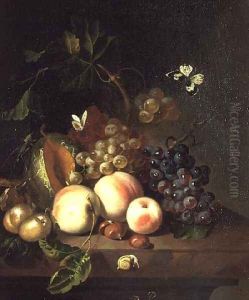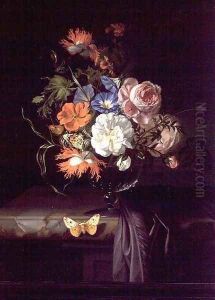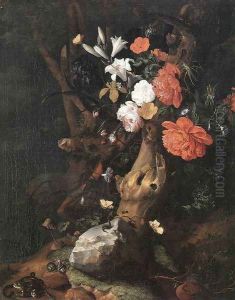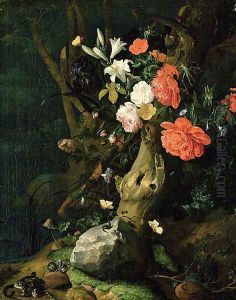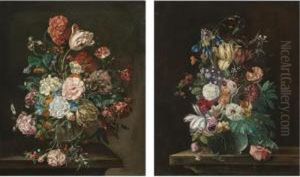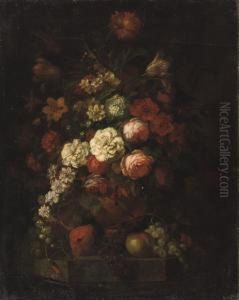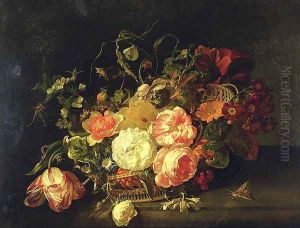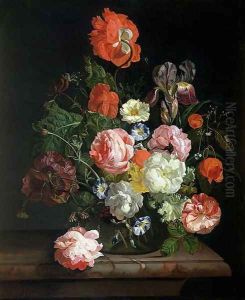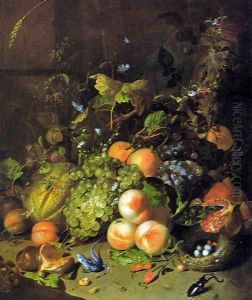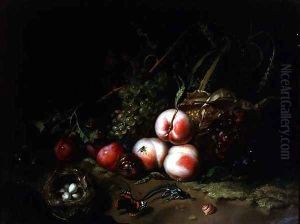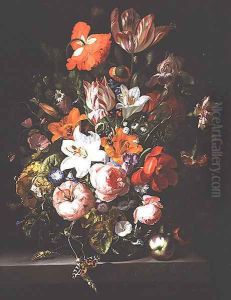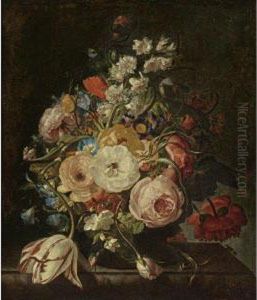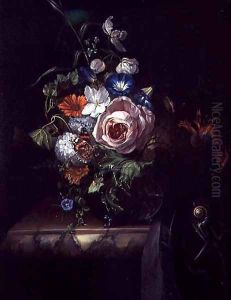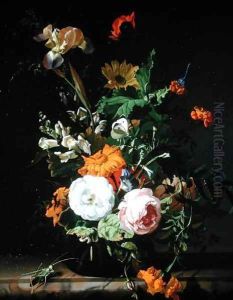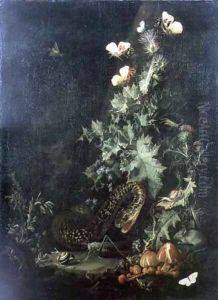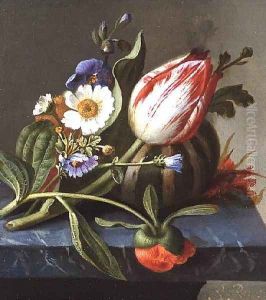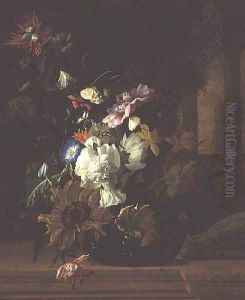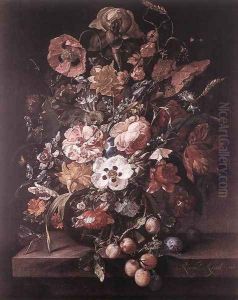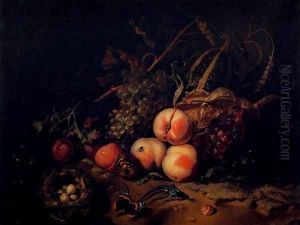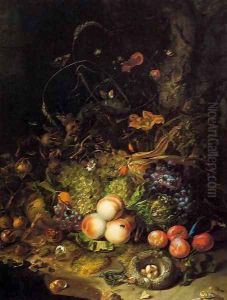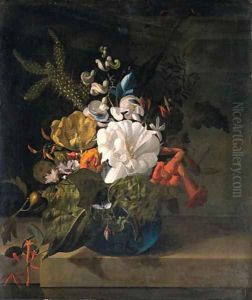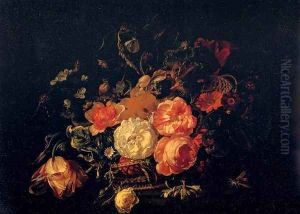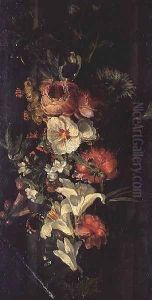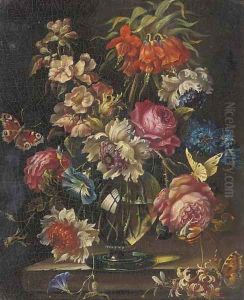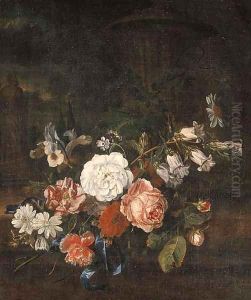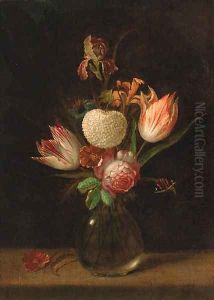Rachel Ruysch Paintings
Rachel Ruysch was a Dutch still-life painter, who is best known for her intricate and vibrant floral compositions. Born on June 3, 1664, in The Hague, Netherlands, she became one of the few female artists to gain prominence in the Dutch Golden Age of painting. Ruysch was the daughter of Frederik Ruysch, a well-known professor of anatomy and botany, and Maria Post, the daughter of a famous architect. Her father's collection of botanical specimens and her upbringing in a scientifically engaged family influenced her detailed and accurate depictions of flowers.
Ruysch began her artistic training at a young age under the tutelage of Willem van Aelst, a prominent still-life painter. She quickly developed her own style, characterized by a rich use of color and intricate arrangement of flowers. Her compositions were not merely imitations of nature; they were carefully constructed artworks that reflected her deep understanding of botany and her artistic creativity.
By her late teens, Ruysch had already achieved some degree of fame and began selling her works to an international clientele. In 1693, she married portrait painter Juriaen Pool, with whom she had ten children. Despite the demands of her large family, Ruysch continued to paint and received numerous commissions throughout her life.
Rachel Ruysch's works were highly sought after, not only in the Netherlands but also by royal patrons across Europe. She became a member of the Confrerie Pictura, an artists' society in The Hague, and later was elected to the Accademia di San Luca in Rome. Her paintings are distinguished by their dynamic composition, sense of depth, and attention to detail. The flowers in her paintings are often depicted as wilting or decaying, which adds a sense of realism and transience to her work.
Ruysch continued to paint well into her eighties, enjoying a long and successful career that spanned over six decades. Her legacy as a female artist in a male-dominated field and her contributions to still-life painting have cemented her place in art history. Rachel Ruysch passed away on August 12, 1750, in Amsterdam, leaving behind a body of work that continues to be admired for its beauty and technical excellence.
